Chrysler 2007 Annual Report Download - page 113
Download and view the complete annual report
Please find page 113 of the 2007 Chrysler annual report below. You can navigate through the pages in the report by either clicking on the pages listed below, or by using the keyword search tool below to find specific information within the annual report.-
 1
1 -
 2
2 -
 3
3 -
 4
4 -
 5
5 -
 6
6 -
 7
7 -
 8
8 -
 9
9 -
 10
10 -
 11
11 -
 12
12 -
 13
13 -
 14
14 -
 15
15 -
 16
16 -
 17
17 -
 18
18 -
 19
19 -
 20
20 -
 21
21 -
 22
22 -
 23
23 -
 24
24 -
 25
25 -
 26
26 -
 27
27 -
 28
28 -
 29
29 -
 30
30 -
 31
31 -
 32
32 -
 33
33 -
 34
34 -
 35
35 -
 36
36 -
 37
37 -
 38
38 -
 39
39 -
 40
40 -
 41
41 -
 42
42 -
 43
43 -
 44
44 -
 45
45 -
 46
46 -
 47
47 -
 48
48 -
 49
49 -
 50
50 -
 51
51 -
 52
52 -
 53
53 -
 54
54 -
 55
55 -
 56
56 -
 57
57 -
 58
58 -
 59
59 -
 60
60 -
 61
61 -
 62
62 -
 63
63 -
 64
64 -
 65
65 -
 66
66 -
 67
67 -
 68
68 -
 69
69 -
 70
70 -
 71
71 -
 72
72 -
 73
73 -
 74
74 -
 75
75 -
 76
76 -
 77
77 -
 78
78 -
 79
79 -
 80
80 -
 81
81 -
 82
82 -
 83
83 -
 84
84 -
 85
85 -
 86
86 -
 87
87 -
 88
88 -
 89
89 -
 90
90 -
 91
91 -
 92
92 -
 93
93 -
 94
94 -
 95
95 -
 96
96 -
 97
97 -
 98
98 -
 99
99 -
 100
100 -
 101
101 -
 102
102 -
 103
103 -
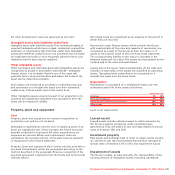 104
104 -
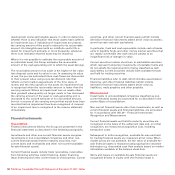 105
105 -
 106
106 -
 107
107 -
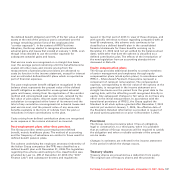 108
108 -
 109
109 -
 110
110 -
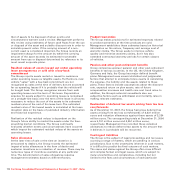 111
111 -
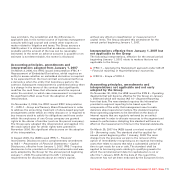 112
112 -
 113
113 -
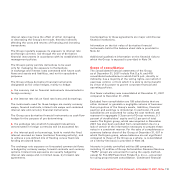 114
114 -
 115
115 -
 116
116 -
 117
117 -
 118
118 -
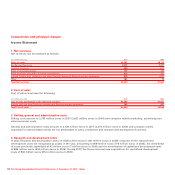 119
119 -
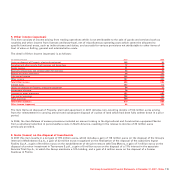 120
120 -
 121
121 -
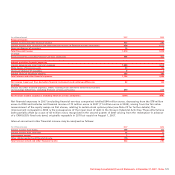 122
122 -
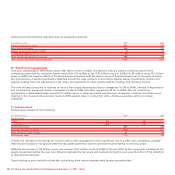 123
123 -
 124
124 -
 125
125 -
 126
126 -
 127
127 -
 128
128 -
 129
129 -
 130
130 -
 131
131 -
 132
132 -
 133
133 -
 134
134 -
 135
135 -
 136
136 -
 137
137 -
 138
138 -
 139
139 -
 140
140 -
 141
141 -
 142
142 -
 143
143 -
 144
144 -
 145
145 -
 146
146 -
 147
147 -
 148
148 -
 149
149 -
 150
150 -
 151
151 -
 152
152 -
 153
153 -
 154
154 -
 155
155 -
 156
156 -
 157
157 -
 158
158 -
 159
159 -
 160
160 -
 161
161 -
 162
162 -
 163
163 -
 164
164 -
 165
165 -
 166
166 -
 167
167 -
 168
168 -
 169
169 -
 170
170 -
 171
171 -
 172
172 -
 173
173 -
 174
174 -
 175
175 -
 176
176 -
 177
177 -
 178
178 -
 179
179 -
 180
180 -
 181
181 -
 182
182 -
 183
183 -
 184
184 -
 185
185 -
 186
186 -
 187
187 -
 188
188 -
 189
189 -
 190
190 -
 191
191 -
 192
192 -
 193
193 -
 194
194 -
 195
195 -
 196
196 -
 197
197 -
 198
198 -
 199
199 -
 200
200 -
 201
201 -
 202
202 -
 203
203 -
 204
204 -
 205
205 -
 206
206 -
 207
207 -
 208
208 -
 209
209 -
 210
210 -
 211
211 -
 212
212 -
 213
213 -
 214
214 -
 215
215 -
 216
216 -
 217
217 -
 218
218 -
 219
219 -
 220
220 -
 221
221 -
 222
222 -
 223
223 -
 224
224 -
 225
225 -
 226
226 -
 227
227 -
 228
228 -
 229
229 -
 230
230 -
 231
231 -
 232
232 -
 233
233 -
 234
234 -
 235
235 -
 236
236 -
 237
237 -
 238
238 -
 239
239 -
 240
240 -
 241
241 -
 242
242 -
 243
243 -
 244
244 -
 245
245 -
 246
246 -
 247
247 -
 248
248 -
 249
249 -
 250
250 -
 251
251 -
 252
252 -
 253
253 -
 254
254 -
 255
255 -
 256
256 -
 257
257 -
 258
258 -
 259
259 -
 260
260 -
 261
261 -
 262
262 -
 263
263 -
 264
264 -
 265
265 -
 266
266 -
 267
267 -
 268
268 -
 269
269 -
 270
270 -
 271
271 -
 272
272 -
 273
273 -
 274
274 -
 275
275 -
 276
276 -
 277
277 -
 278
278 -
 279
279 -
 280
280 -
 281
281 -
 282
282 -
 283
283 -
 284
284 -
 285
285 -
 286
286 -
 287
287 -
 288
288 -
 289
289 -
 290
290 -
 291
291 -
 292
292 -
 293
293 -
 294
294 -
 295
295 -
 296
296 -
 297
297 -
 298
298 -
 299
299 -
 300
300 -
 301
301 -
 302
302 -
 303
303 -
 304
304 -
 305
305 -
 306
306 -
 307
307 -
 308
308 -
 309
309 -
 310
310 -
 311
311 -
 312
312 -
 313
313 -
 314
314 -
 315
315 -
 316
316 -
 317
317 -
 318
318 -
 319
319 -
 320
320 -
 321
321 -
 322
322 -
 323
323 -
 324
324 -
 325
325 -
 326
326 -
 327
327 -
 328
328 -
 329
329 -
 330
330 -
 331
331 -
 332
332 -
 333
333 -
 334
334 -
 335
335 -
 336
336 -
 337
337 -
 338
338 -
 339
339 -
 340
340 -
 341
341
 |
 |
Fiat Group Consolidated Financial Statements at December 31, 2007 - Notes112
On July 5, 2007 IFRIC issued the interpretation IFRIC 14 –
IAS
19
–
The Limit on a Defined Benefit Asset, Minimum Funding
Requirements and their Interaction
. The interpretation is
mandatory from January 1, 2008. The interpretation provides
general guidance on how to assess the limit in IAS 19 –
Employee Benefits
on the amount of the surplus that can be
recognised as an asset. It also explains how the pension
asset or liability may be affected when there is a statutory or
contractual minimum funding requirement. At the balance
sheet date, this interpretation had not yet been endorsed by
the European Union.
On September 6, 2007 the IASB issued a revised version of
IAS 1 -
Presentation of Financial Statements
that is effective
for annual periods beginning on or after 1 January 2009. The
revised standard requires an entity to present changes in its
equity resulting from transactions with owners in a
statement of changes in equity. All non-owner changes
(meaning changes in comprehensive income) are required to
be presented either in a single statement of comprehensive
income or in two statements (a separate income statement
and a statement of comprehensive income). Transactions
with non-owners may not be presented in the statement of
changes in equity. This standard had not yet been endorsed
by the European Union at the balance sheet date.
The following standards and interpretations have also been
issued, but are not applicable to the Group:
■ IFRIC 12 –
Service Concession Arrangements
(effective from
January 1, 2008 but not yet endorsed by the European Union);
■ IFRIC 13 –
Customer Loyalty Programmes
(effective from
January 1, 2009 but not yet endorsed by the European Union).
Risk management
Credit risk
The Group’s credit concentration risk differs in relation to the
activities carried out by the individual sectors and various
sales markets in which the Group operates; in all cases,
however, the risk is mitigated by the large number of
counterparties and customers.
Considered from a global point of view, however, there is a
concentration of credit risk in trade receivables and
receivables from financing activities, in particular dealer
financing and finance leases in the European Union market
for the Fiat Group Automobiles and Trucks and Commercial
Vehicles Sectors, and in North America for the Agricultural
and Construction Equipment Sector.
Financial assets are recognised in the balance sheet net of
write-downs for the risk that counterparties will be unable to
fulfil their contractual obligations, determined on the basis of
the available information as to the creditworthiness of the
customer and historical data.
Liquidity risk
The Group is exposed to funding risk if there is difficulty
in obtaining finance for operations at any given point in
time.
The cash flows, funding requirements and liquidity of Group
companies are monitored on a centralised basis, under the
control of the Group Treasury. The aim of this centralised
system is to optimise the efficiency and effectiveness of the
management of the Group’s capital resources.
In addition, Group Treasury has the committed credit
facilities described in Note 28 as a hedge of liquidity risk.
Interest rate risk and currency risk
As a multinational group that has operations throughout the
world, the Group is exposed to market risks from fluctuations
in foreign currency exchange and interest rates.
The exposure to foreign currency risk arises both in
connection with the geographical distribution of the Group’s
industrial activities compared to the markets in which it sell
products, and in relation to the use of external borrowing
denominated in foreign currencies.
The exposure to interest rate risk arises from the need to
fund industrial and financial operating activities and the
necessity to deploy surplus funds. Changes in market
